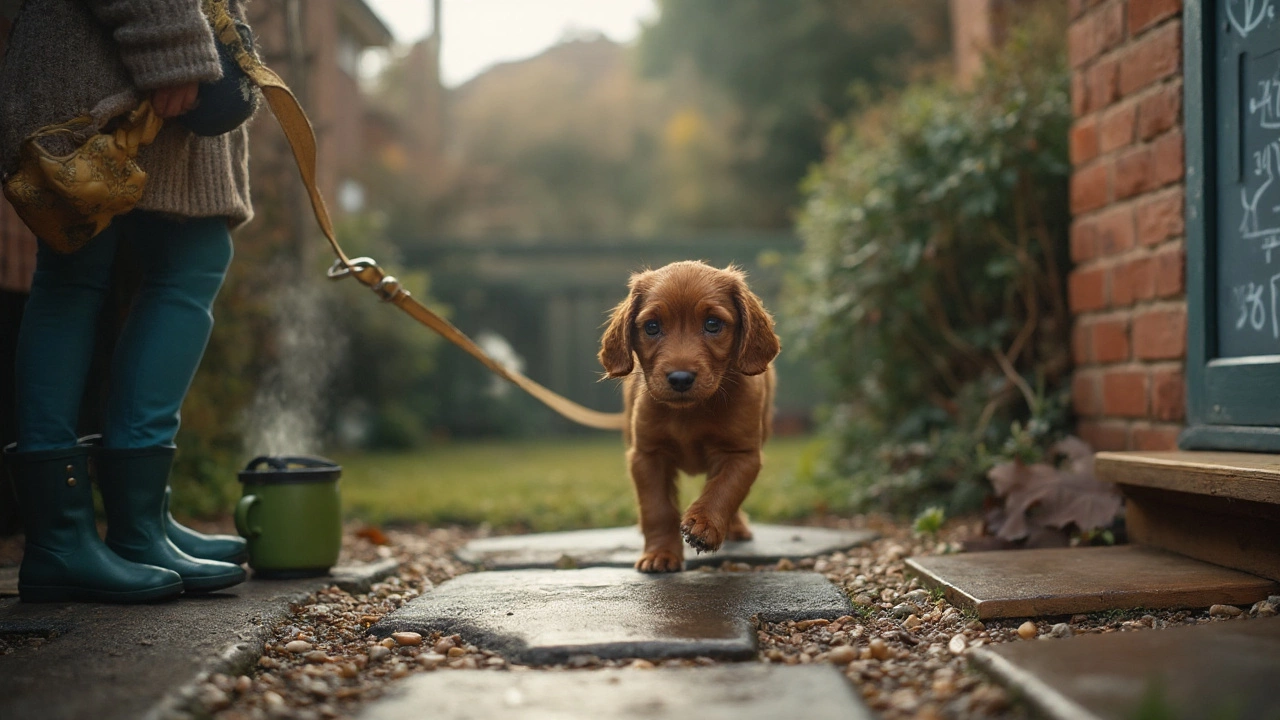Potty Train a Puppy: A No‑Nonsense Guide
Got a new pup and wondering how to keep the house dry? You’re not alone – most owners face the same challenge. The good news? Potty training doesn’t have to be a mystery. With a steady routine, the right tools, and a bit of patience, you’ll have your puppy wiping the floor clean in no time.
Set Up a Consistent Schedule
The backbone of any successful training plan is consistency. Puppies have tiny bladders, so they need to go out every 1–2 hours, plus right after eating, sleeping, or playtime. Mark these moments on a phone reminder or a simple wall chart. When you stick to the same times every day, your pup learns to expect a break and will start giving you subtle signals – sniffing, circling, or heading to the door.
Choose the Right Spot and Reward
Pick a specific outdoor spot that’s easy to reach from your home. Consistency helps the puppy associate that scent with ‘go here’. When your puppy does its business in the right place, reward immediately – a treat, a squeaky toy, or enthusiastic praise. The reward must come right after they finish, otherwise the connection gets fuzzy.
Watch for the classic “potty signals”. If your puppy sniffs the floor, whines, or darts to the door, act fast. Even a quick sprint outside reinforces the habit. If you miss it, gently guide them to the spot as soon as you realize, then reward.
Accidents happen – they’re part of learning. When you find a mess, clean it with an enzymatic cleaner to erase any lingering scent. Don’t scold or punish; that only confuses the pup and can make them fear you. Instead, focus on reinforcing the right behavior next time.
Crate training can be a powerful ally. Dogs naturally avoid soiling their sleeping area, so a properly sized crate (just big enough to turn around) encourages them to hold it until you let them out. Make sure the crate isn’t a punishment zone – add a comfy blanket and a chew toy, and let the pup spend short, happy periods inside.
Consider a potty pad for times you can’t get outside immediately, like during bad weather. Place the pad next to the door, and gradually move it closer to the outdoors as the puppy gets the hang of the routine. Eventually, the pad becomes a temporary stop‑over, not a permanent solution.
Feeding schedule matters too. Feed the same amount at the same times each day. Predictable meals lead to predictable bathroom breaks. Avoid free‑feeding, which makes it harder to guess when the pup will need to go.
Finally, be patient and keep the vibe positive. Puppies pick up on your tone – a calm, encouraging voice works better than a stressed one. Celebrate small wins, stay consistent, and you’ll see the house stay dry faster than you expect.
Ready to start? Grab a treat pouch, set those reminders, and watch your new best friend become a potty‑pro in weeks. Happy training!
Posted By Bryndle Redding On 7 Sep 2025 Comments (0)
How Long Does It Take to Potty Train a Puppy? Real Timeline, Schedules, and Fixes
Real potty training timelines: what to expect by age, daily schedules, setbacks, and fixes. Clear steps, checklists, and FAQs for new puppy parents.
READ MORE